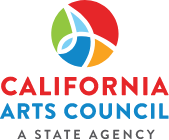This report analyzes data from the 2017 Survey of Public Participation in the Arts (SPPA), which the National Endowment for the Arts conducted in partnership with the U.S. Census Bureau. It gives a statistical overview of how the nation’s adults engage with leisure reading and other literary activities, such as author readings, book clubs, and creative writing. The survey identifies three groups of adults: nonreaders, print-only readers, and digital/audio readers. (The latter category describes adults who read e-books or listened to audiobooks, but who also may have read books in print.)
Previous reports from the National Endowment for the Arts have shown long-term declines in book-reading and in the reading of literary texts—e.g., novels and short stories. For those who care about the future of books and literature, the new report attests to the vitality of digital and audio platforms in today’s literary culture. For example, when we account for adults who listen to audiobooks, the total number of adults who engage with books is more comparable to figures from previous years. Also, the data show that while older readers read books at higher rates than do younger adults, digital/audio reading is more common among younger than older readers. Indeed, digital/audio readers consume more books on average and engage in other cultural activities at higher rates than do print-only readers.

